How to Prevent Overstimulation During Cat Socialization
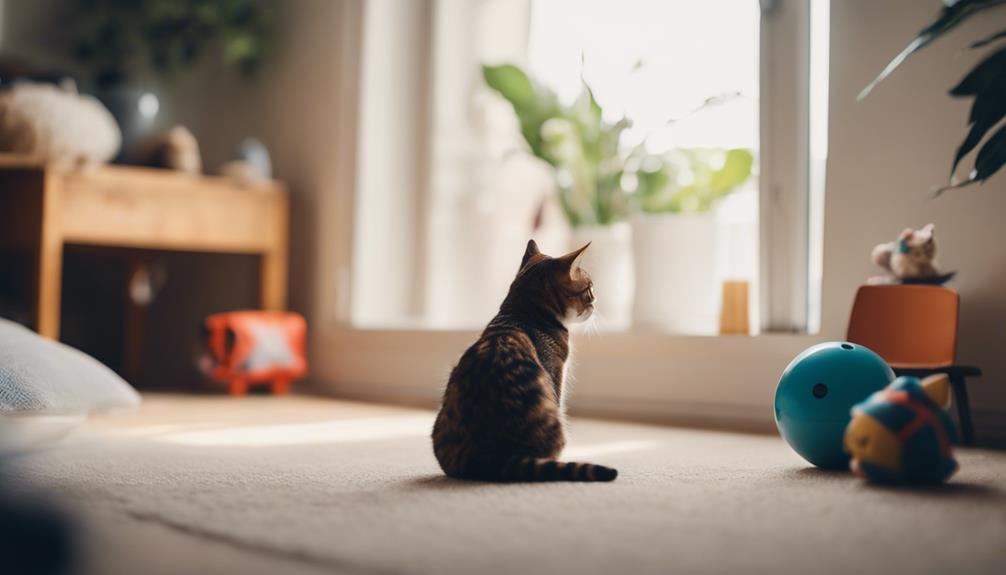
Cats are sensitive creatures that can easily become overstimulated during socialization. This can lead to stress, aggression, or other unwanted behaviors. To prevent overstimulation and ensure healthy interactions with your cat, it is important to understand their body language and limits.
One practical strategy is to provide a safe space for your cat to retreat to when they need a break. This could be a cozy bed, a quiet room, or a high perch where they can observe without feeling threatened.
Additionally, it is crucial to pay attention to your cat's cues and body language. Signs of overstimulation may include dilated pupils, flattened ears, twitching tail, or aggressive behavior. If you notice these signs, give your cat space and time to calm down.
Regular play sessions and interactive toys can also help channel your cat's energy in a positive way, reducing the likelihood of overstimulation during socialization. By being mindful of your cat's needs and limits, you can create a positive and healthy environment for social interactions.
Understanding Your Cat's Triggers
Understanding your cat's triggers can significantly enhance your ability to provide a safe and comfortable environment for your feline friend. Identifying fear and avoiding stressors are crucial steps in ensuring your cat's well-being. Cats can be sensitive to various stimuli, such as loud noises, sudden movements, unfamiliar scents, or even changes in their routine. By observing your cat's body language and behavior, you can start to recognize what triggers their fear or anxiety.
Common signs of fear in cats include dilated pupils, flattened ears, tail twitching, or attempts to hide. If you notice these signs, it's essential to remove the stressor and create a calming environment for your cat. Understanding what triggers your cat's fear can help you proactively avoid situations that may cause them distress.
Creating a peaceful and stress-free environment for your cat is key to maintaining their overall well-being and happiness. By being attentive to their triggers and making adjustments accordingly, you can help your feline companion feel safe and secure in their home.
Establishing Safe Zones at Home
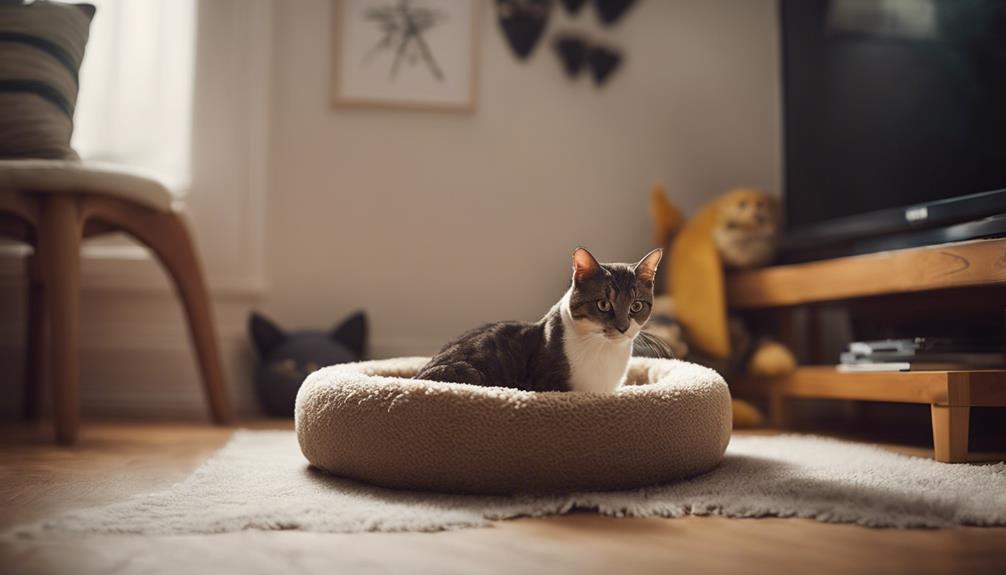
Creating designated safe zones within your home can provide your cat with a secure and comfortable space to retreat to when feeling overwhelmed. These safe havens offer peaceful spaces where your feline friend can relax and recharge, helping to prevent overstimulation during socialization.
Here are four key elements to consider when establishing safe zones at home:
- Cozy Hideaways: Provide enclosed spaces like cat condos, cozy beds, or covered crates where your cat can feel safe and hidden from view.
- Vertical Territory: Install cat trees, shelves, or perches to give your cat elevated spots to observe their surroundings and feel secure.
- Quiet Retreats: Designate quiet rooms or corners with minimal traffic and noise where your cat can retreat undisturbed.
- Comforting Resources: Place familiar items like your cat's favorite toys, blankets, or scratching posts in these safe zones to create a sense of comfort and familiarity.
Implementing Structured Play Sessions
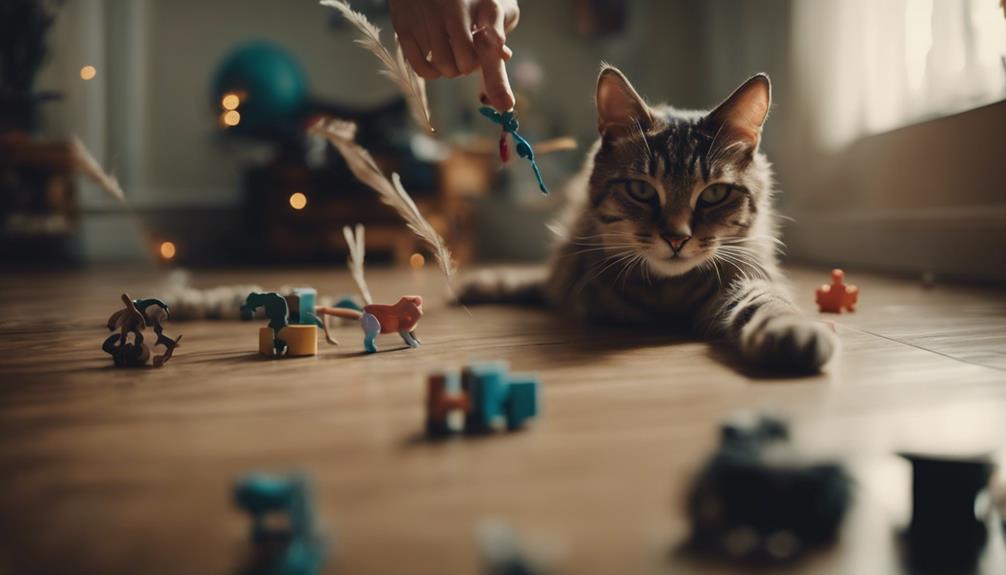
To engage your cat in beneficial activities, consider incorporating structured play sessions into their daily routine. These playtime strategies not only provide mental and physical stimulation but also help establish clear interaction boundaries between you and your feline friend. When implementing structured play sessions, it's essential to create a balance between stimulus exposure and quiet spaces where your cat can retreat if feeling overwhelmed. By respecting your cat's need for breaks and quiet time, you can prevent overstimulation and build a stronger bond based on trust and understanding.
| Playtime Strategies | Interaction Boundaries | Quiet Spaces |
|---|---|---|
| Use interactive toys | Set time limits for play | Provide hiding spots |
| Rotate toys to keep it interesting | Respect your cat's signals | Create cozy areas for relaxation |
| Incorporate puzzle feeders | Avoid rough play | Minimize loud noises |
Recognizing Body Language Cues
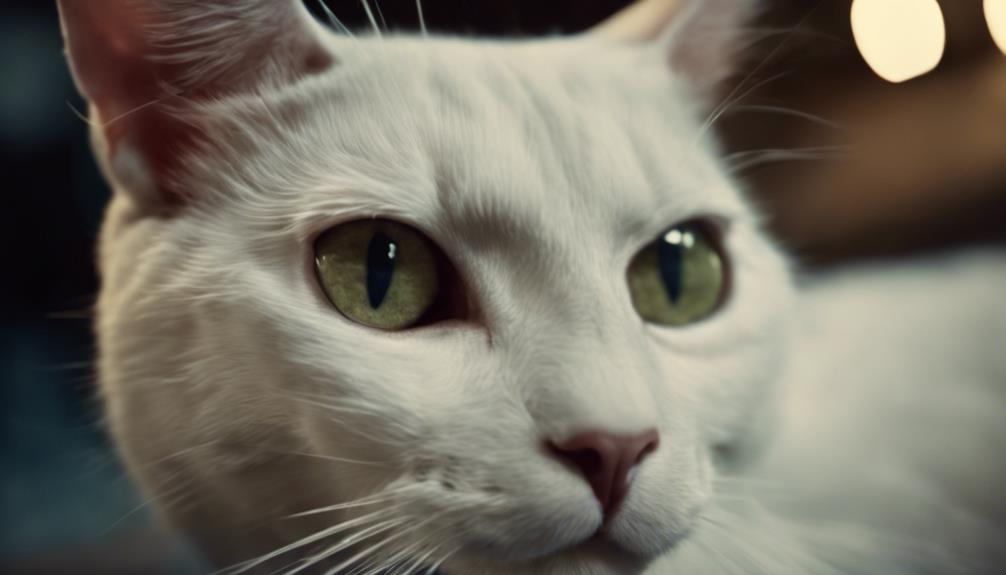
When observing your cat, pay close attention to their body language cues as they communicate their feelings and comfort levels through subtle signals. Understanding these cues is crucial for successful cat socialization. Here are some key points to keep in mind:
- Eyes: Dilated pupils can indicate excitement or fear, while slow blinking signifies relaxation and trust.
- Ears: Forward-facing ears show attentiveness, while flattened ears suggest agitation or fear.
- Tail: A gently swaying or upright tail typically signals a content cat, while a flicking or puffed-up tail may indicate stress.
- Posture: Relaxed body posture with a slightly raised rear indicates a happy cat, whereas a crouched or tense body signals discomfort.
Setting Boundaries During Interactions

During interactions with your cat, it's essential to establish clear boundaries to ensure a positive and respectful relationship. Communication boundaries are key; pay attention to your cat's signals and respect their limits.
Cats appreciate consistency, so set rules for interactions and stick to them. If your cat shows signs of discomfort, such as flattened ears or a flicking tail, give them space and time to relax.
When setting boundaries, use positive reinforcement to encourage good behavior. For example, reward your cat with treats or gentle petting when they respect your boundaries. Consistent reinforcement helps your cat understand what's expected of them during interactions.
Remember that every cat is unique, so be patient and understanding as you establish these boundaries. By respecting your cat's limits and using positive reinforcement, you can create a harmonious and enjoyable socialization experience for both you and your feline friend.
Providing Quiet Retreat Spaces
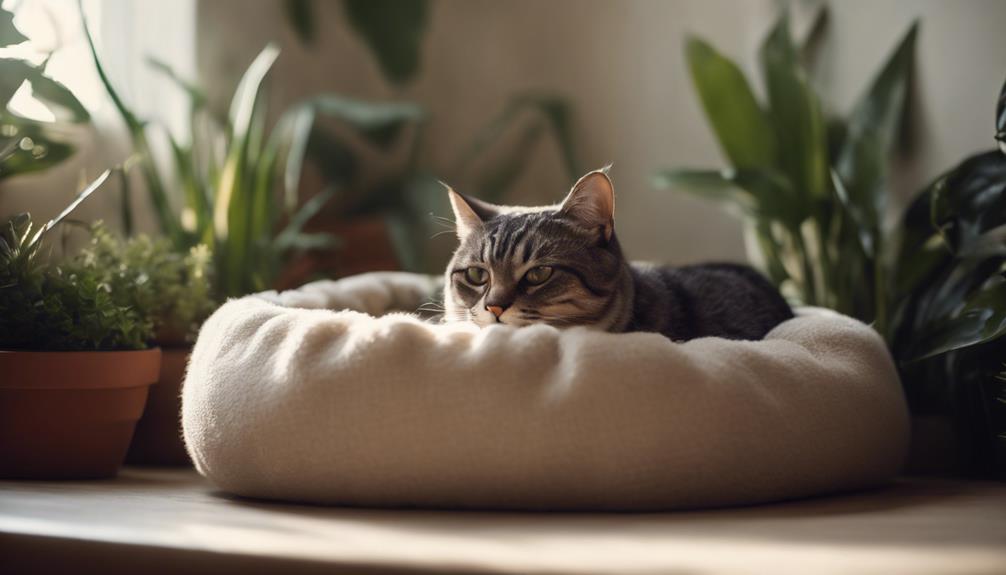
Cat socialization can sometimes lead to overstimulation, causing stress or anxiety in felines. Providing quiet retreat spaces is crucial to help cats feel safe and secure.
Safe hideaway options and calm resting areas can offer cats a much-needed break from social interactions.
Safe Hideaway Options
Consider providing at least two cozy hideaway spots in different areas of your home to offer your cat a quiet retreat space. These hideaways can serve as secure refuges where your cat can feel safe and calm when overwhelmed. Here are some ideas to create comfortable hiding spots for your feline friend:
- Cozy Cat Condo: Place a plush cat condo in a quiet corner with soft bedding for your cat to snuggle into.
- Under-bed Sanctuary: Keep an area under the bed accessible for your cat to retreat to when needing solitude.
- Window Perch: Install a window perch with a view for your cat to observe the world from a safe distance.
- Closet Nook: Create a cozy nook in a closet with a blanket or towel for your cat to relax in peace.
Calm Resting Areas
To ensure your cat feels secure and at ease, providing calm resting areas throughout your home is essential for creating quiet retreat spaces. Cats often seek out cozy nooks and comfortable bedding for moments of relaxation and solitude. By incorporating these elements into your living space, you can help prevent overstimulation during socialization. Here is a helpful guide to setting up serene resting spots for your feline friend:
| Calm Resting Areas | Description |
|---|---|
| 1. Cozy Cat Bed | A soft, plush bed for peaceful naps |
| 2. Window Perch | A sunny spot with a view for lounging |
| 3. Quiet Corner | A secluded area for undisturbed rest |
| 4. Elevated Shelves | Vertical spaces for a sense of security |
| 5. Cat Cave | An enclosed space for privacy and comfort |
Gradual Exposure to New Stimuli
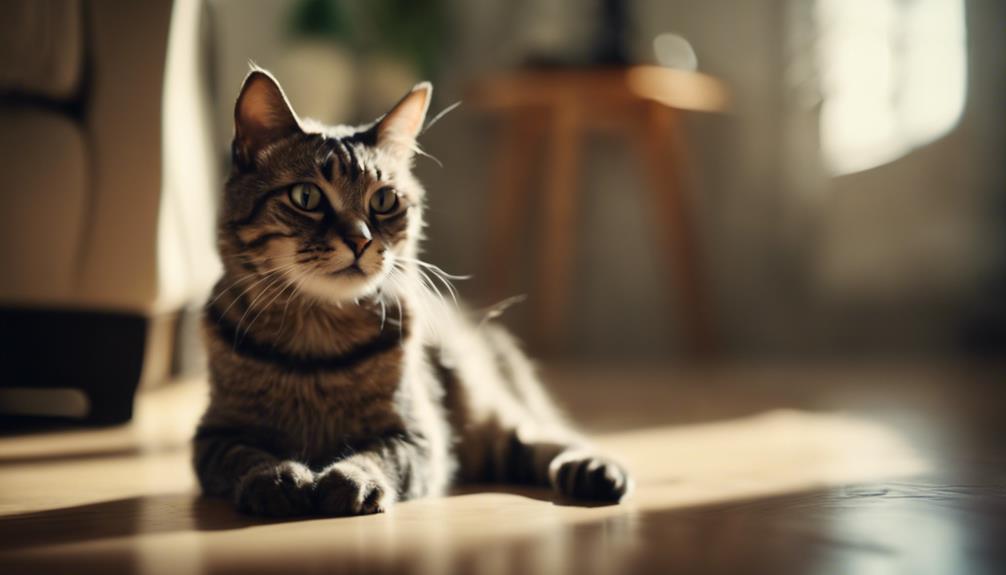
When introducing your feline companion to new experiences, it's essential to gradually expose them to different stimuli to prevent overstimulation. Cats, like humans, can become overwhelmed when faced with too much too soon.
Here are some practical tips to help you gradually introduce your cat to new stimuli:
- Slow Introduction: Start by slowly introducing one new stimulus at a time. This could be a new sound, scent, or object in their environment.
- Positive Reinforcement: Use positive reinforcement techniques such as treats, toys, or verbal praise to associate the new stimuli with something pleasant.
- Gentle Approach: Approach your cat calmly and gently when exposing them to new things. Avoid sudden movements or loud noises that could startle them.
- Consistent Rewards: Be consistent in rewarding your cat for their brave interactions with new stimuli. This will help them associate positive outcomes with these experiences.
Frequently Asked Questions
How Can I Tell if My Cat Is Becoming Overstimulated During Socialization?
If a cat is becoming overstimulated during socialization, watch for changes in body language and stress indicators. Identify environmental triggers and use calming techniques like providing a quiet space or interactive toys to help them relax.
Are There Certain Types of Toys or Activities That Are More Likely to Lead to Overstimulation in Cats?
Certain types of toys like laser pointers or fast-moving toys may lead to overstimulation in cats. Play duration should be monitored to prevent exhaustion. Setting clear interaction boundaries and incorporating mental stimulation activities can help prevent overstimulation.
What Are Some Signs That My Cat May Need a Break From Socialization?
When cats need a break from socialization, they may show stress signals like dilated pupils or flattened ears. Offering relaxation techniques such as gentle petting can help. Timeout options, like a cozy hiding spot, and understanding body language cues are key.
How Can I Help My Cat Recover From a Bout of Overstimulation During Socialization?
To help a cat recover from overstimulation during socialization, focus on relaxation techniques like providing a quiet space, gentle petting, and soothing music. Employ stress management strategies such as play therapy, interactive toys, and gradual reintroduction to social interactions.
Can Overstimulation During Socialization Have Long-Term Effects on My Cat's Behavior?
Overstimulation during socialization can lead to long-term behavioral changes in cats. Training techniques can help manage stress and promote mental health. Consistent positive experiences and monitoring can prevent detrimental effects on their behavior.











